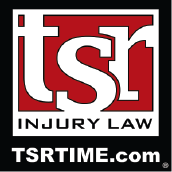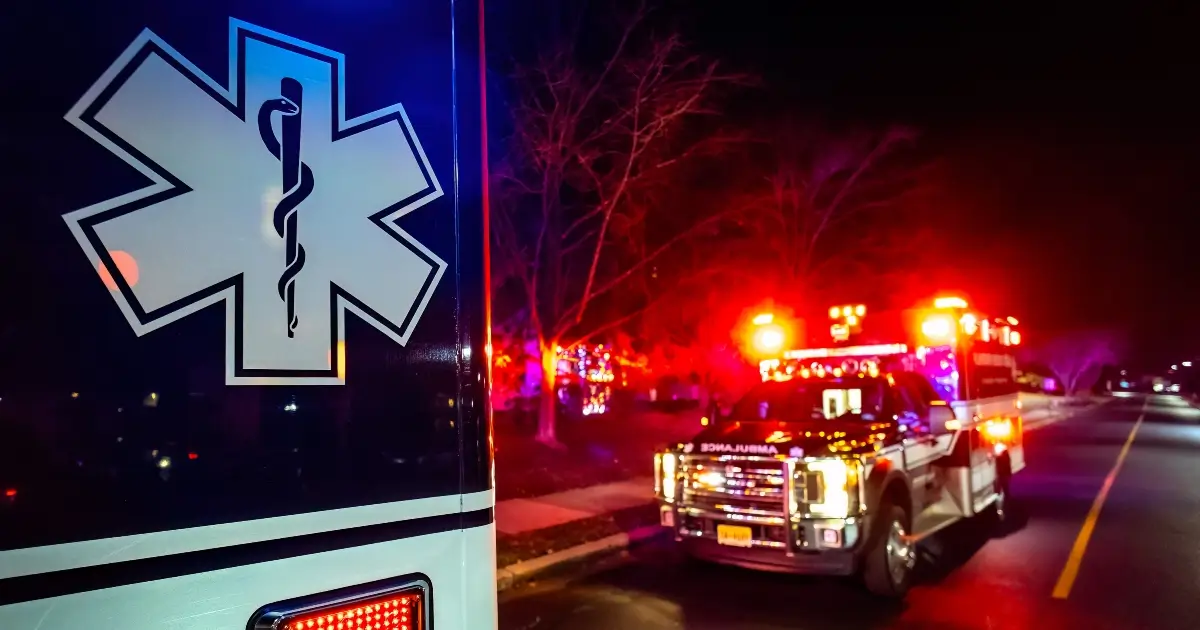
Minnesota’s orange barrel season has arrived, transforming familiar roads once again into challenging obstacle courses. Are you ready to navigate this year’s construction zones, lane closures, and ever-changing traffic patterns? The irony of construction season is how it introduces necessary infrastructure improvements, while simultaneously increasing road risks.
What does this mean for drivers? You need to know the specific laws that apply to work zones and how to navigate these areas safely. Being “in the know” when the orange barrels roll out can be the difference between reaching your destination without incident and facing costly fines, traffic violations, or worse.
At TSR Injury Law, we are Minnesota natives, so we know the headaches that construction season presents to local drivers. We also have extensive knowledge of the specific laws that apply to work zones during construction season.
If you have been injured in a construction zone collision, let our Minneapolis-based car crash attorneys help. We are prepared to fight for your legal rights and help you recover the full compensation you deserve.
Call (612) TSR-TIME for a free consultation – we work on contingency, so you pay nothing unless we win your case.
What Is Orange Barrel Season and When Does It Peak in Minneapolis?
If you’ve been in Minnesota long, you’ll know that orange barrel season is the term we use to describe the months when construction projects dominate our roadways. Those bright orange barrels, cones, and barriers seem to multiply overnight, marking everything from simple road repairs to major highway reconstruction projects across the Twin Cities.
Orange barrel season in the Twin Cities typically runs from late April through October, with peak activity occurring during the summer months of June, July, and August. The longer, colder winters force the state to compress an entire year’s worth of infrastructure projects into this shorter window. This concentration of construction activity means Minneapolis drivers can expect to encounter multiple work zones during their daily commutes throughout the warmer months.
How Does Orange Barrel Season Affect Me as a Driver?
The construction zones popping up during orange barrel season create a ripple effect that touches every aspect of your daily driving routine. Your familiar commute routes may suddenly include lane restrictions, temporary detours, or complete road closures that force you onto unfamiliar side streets. What used to be a predictable 20-minute drive to work can easily stretch to 35 or 40 minutes when construction zones slow traffic to a crawl.
Beyond the obvious time delays, construction zones present unique hazards that require you to stay completely focused on the road and ready to quickly respond if a problem arises.
Some of the unexpected issues you encounter while navigating a work zone include:
- You may encounter workers operating heavy machinery just feet from traffic.
- Sudden lane merges with little warning
- Confusing signage that conflicts with your GPS directions.
- Reduced visibility around equipment and barriers
- Stop-and-go nature of construction zone traffic tests even the most patient drivers.
These conditions can be stressful, especially if you are running behind time to get to your destination. Work zones demand heightened awareness and defensive driving skills that go well beyond normal highway travel.
What Are the Speed Limits in a Minnesota Work Zone?
Speed limits in Minnesota work zones are set by the agency overseeing the construction project. For highways or city and county roads, this is typically MnDOT. When you see these reduced speed limits, it is important to adhere to them, because they are not suggestions. They carry the full force of law once proper signage is posted. Work zone speed limits typically range from 45 mph on highways that normally allow 70 mph. In areas where workers operate close to traffic, speeds may sometimes drop to 25 mph or less.
The speed limit becomes legally enforceable as soon as you see the first work zone sign. This applies even if you do not see any active construction or workers present. Reduced speeds remain in effect 24 hours a day, seven days a week. They stay active until the work zone signage is officially removed.
Violating work zone speed limits triggers Minnesota’s doubled fine structure. A speeding ticket that would normally cost you $150 could jump to $300 or more. The penalties become even more severe if your speed violation results in injury to a construction worker. This could lead to criminal charges beyond the standard traffic citation.
What Other Laws or Rules Apply to Orange Barrel Zones in Minnesota?
Beyond speed limits, Minnesota has several specific laws and traffic rules that you need to know about and follow when navigating construction zones. These rules are designed to protect both drivers and construction workers while maintaining traffic flow through work areas. Understanding these requirements can help you avoid costly violations and navigate construction zones more safely.
Understanding Zipper Merge Rules
Minnesota officially endorses the zipper merge technique in construction zones where lanes close ahead. This means you should use both lanes until the merge point, then alternate one car from each lane like a zipper. Do not merge early or block drivers who are using the closing lane properly. The zipper merge reduces overall traffic delays and prevents dangerous last-minute lane changes. Drivers who aggressively block merging traffic can be cited for impeding traffic flow.
Adhere to Move Over Law Requirements
Minnesota’s Move Over Law extends beyond emergency vehicles to include construction equipment and maintenance vehicles in work zones. When you see flashing lights on construction vehicles, tow trucks, or maintenance equipment, you must move over one full lane if it is safely possible. If you cannot change lanes safely, you must slow down significantly below the posted speed limit. Failing to move over or slow down can result in fines starting at $200, with higher penalties if your violation causes injury.
Never Go Through Blocked Roads and Barriers
Never attempt to drive around or through areas blocked by orange barrels, cones, or barriers in construction zones. These barriers mark areas where the road surface may be damaged, equipment is operating, or workers are present. Entering blocked areas is illegal and extremely dangerous. Penalties for violating barrier restrictions include fines and potential criminal charges if your actions endanger construction workers.
Do Construction Flaggers Have Legal Authority Over Minneapolis Traffic?
Yes, construction flaggers have full legal authority to direct traffic in Minnesota work zones, and drivers are required by law to obey their signals and directions. Flaggers undergo specialized training and certification to safely manage traffic flow around construction activities. Their authority is equivalent to that of a traffic signal or stop sign, meaning failure to comply with flagger instructions can result in traffic citations and fines.
A flagger’s authority includes:
- Traffic Direction: Flaggers can stop, slow, or direct traffic flow through construction zones using standardized hand signals and stop/slow paddles.
- Lane Control: Flaggers have the authority to direct vehicles into specific lanes or around obstacles, even if it means temporarily using the opposing traffic lane.
- Speed Control: Flaggers can require drivers to reduce speed below posted limits when conditions warrant slower movement through work areas.
- Access Restriction: Flaggers can prevent vehicles from entering certain areas of the work zone or redirect traffic to alternate routes.
- Requesting Citations: Flaggers can radio police officers to cite drivers who refuse to follow their directions or who drive aggressively through flagging operations.
- Work Zone Coordination: Flaggers coordinate with equipment operators and other workers to ensure safe passage of vehicles around construction activities.
When approaching a flagger, your responsibility as a driver is to:
- Slow down and prepare to stop.
- Make eye contact with the flagger and watch for their signals.
- Follow flagger directions even if they conflict with normal traffic rules.
- Be patient and avoid aggressive driving behaviors around flagging operations.
What Is a Pilot Car in an Orange Barrel Zone?
A pilot car is a vehicle that leads cars through construction zones where only one lane is open. These cars have special signs that say they are pilot cars. Construction crews use them when the work zone is too narrow or dangerous for drivers to go through alone.
If a pilot car is being used, it means cars going in both directions will need to use the same lane but at different times. Flaggers control when each group of cars can go through the work zone.
When you reach a pilot car area, wait for any cars coming from the other direction to finish going through first. A flagger will tell you when it is your turn. Follow the pilot car and stay behind it the whole time. Do not try to pass the pilot car or other cars. The pilot car knows the safe speed for the construction zone. Following these rules keeps you from running into cars coming the other way in the narrow work area.
Why Minnesota Doubles Fines During Construction Season
Minnesota doubles all traffic fines in work zones to protect construction workers and encourage safer driving. This law recognizes that construction zones create more dangerous conditions for everyone. Workers often operate just feet away from fast-moving traffic. Even a small mistake by a driver can have deadly consequences.
Where the Doubled Fine Rule Applies
The doubled fine rule applies to all traffic violations in work zones. Speeding, following too closely, illegal lane changes, and distracted driving all cost twice as much when they happen in construction areas. A typical speeding ticket that costs $125 becomes $250 in a work zone. More serious violations can result in fines over $500.
When Are Higher Penalties Used?
These higher penalties stay in effect 24 hours a day while construction signs are posted. It does not matter if you see workers or not. The doubled fines apply whether construction crews are actively working or the site appears empty. The law also increases penalties beyond just money. Violations that injure construction workers can lead to license suspension and criminal charges.
Minnesota created this law because regular fines were not preventing dangerous driving in work zones. The higher costs get drivers’ attention and make them think twice before speeding or driving recklessly around construction areas. The goal is simple: protect the workers who are improving our roads and keep all drivers safer during construction season.
Leading Tips to Help You Avoid a Minnesota Work Zone Car Crash
As for any time you get behind the wheel, you want to remain alert and focused on the road. Drive defensively, making sure you adjust your driving behavior and speed well before you enter a work zone.
Here are some additional steps you can take to avoid being involved in a work zone car crash:
- Reduce Your Speed/Slow Down: Begin adjusting your speed as soon as you see work zone warning signs, even before you reach the actual construction area.
- Use the Zipper Merge: Use both lanes until the merge point, then take turns merging one car at a time like a zipper. Do not merge early or block drivers who are properly using the closing lane.
- Adjust Your Following Distance: Maintain at least a 4-second distance between your vehicle and the vehicle ahead of you.
- Eliminate Distractions: Stay off your phone or do not engage in any activities that take your eyes or mind off the road and your hands off the wheel.
- Stay in Your Lane: Avoid sudden lane changes or vehicle maneuvers within the construction area. Use your turn signal when a change or merge becomes necessary.
- Be Patient with Slower Traffic: Everyone around you is in the same boat, so resist the urge to speed up between work zones.
- Watch for Workers, Equipment, or Other Vehicles: Scan traffic around you continuously to monitor for any vehicles or workers that may enter your travel lane unexpectedly.
Injured in a Work Zone Crash? How a Poorly Designed Construction Zone May Strengthen Your Claim
Poor work zone setup can make construction companies liable for crashes. When companies do not follow safety rules for designing construction areas, they create dangerous conditions that strengthen your injury claim.
What Construction Companies Must Do
Construction companies must place warning signs at the right distances before work zones. They need to position cones and barriers correctly to guide drivers safely. Traffic control devices must clearly show drivers where to go. When companies skip these required steps, they become liable for resulting crashes.
Common Setup Problems That Cause Crashes
Several work zone design failures create dangerous conditions that lead to work zone crashes:
- Warning signs placed too close to the work zone
- Missing or poorly positioned traffic control devices
Sudden lane changes without adequate advance warning - Construction equipment parked too close to active traffic lanes
- Confusing signage that conflicts with normal traffic patterns
This evidence can help to prove the construction company made mistakes that contributed to your crash.
Experienced Minneapolis Lawyers Help When Construction Season Goes Wrong
If you were injured in a work zone crash, we would love to hear from you. Our legal team is deeply committed to helping victims injured by the negligence of others. We want you to be able to focus on healing while we manage our case and fight for maximum compensation.
At TSR Injury Law, our Minneapolis attorneys understand the complex legal situations that often arise from construction zone crashes, and we have a history of proven results.
Call (612) TSR-TIME today for a free consultation – we work on contingency, so you pay nothing unless we win.




